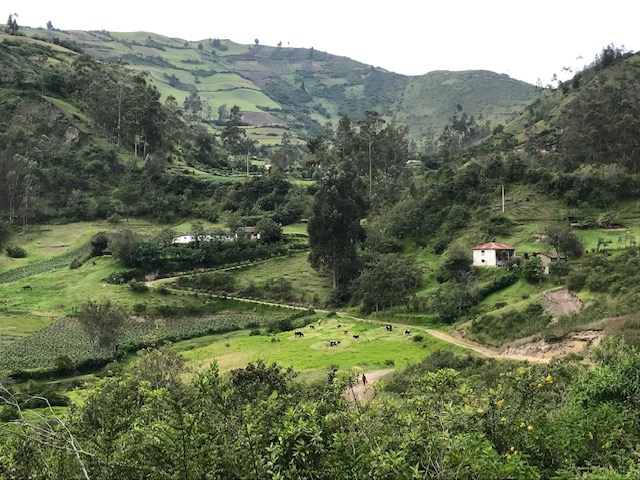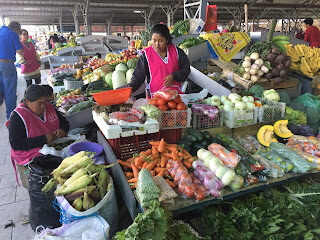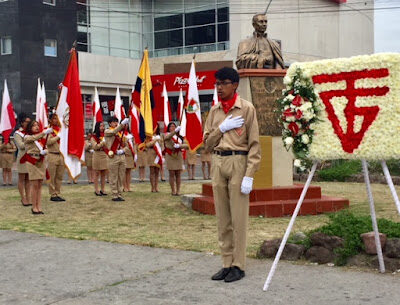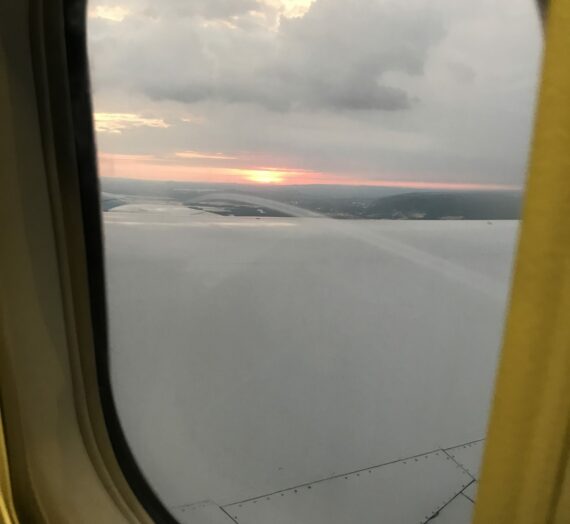A note to my readers:
If you’ve been reading or listening to any news, you might already know that all Peace Corps volunteers around the world were evacuated from their host countries this week and sent back to the United States. I’m now in the suburbs of Chicago, trying to self-quarentine and deal with this new reality. I’m sad and exhausted from the ordeal of being ripped from my beloved Ecuadorian home, and I’m not yet ready to talk about it. I’m going to continue my line-up of posts for the next few weeks, and by then, I’ll be able to articulate my epic journey back to the U.S. I promise, you will read about it soon enough.
*******
In the central highlands of Ecuador lies a mysterious blue-green lake, enshrouded in mist, pounded by the high-elevation paramo winds, and surrounded by lush patchwork fields of corn, quinoa, barley and legumes. This is Quilotoa.
I’ve written about this crater lake before in my posts as I’ve stood at the visitor look-out and smiled for photos with my guests. I’ve traveled around the region by bus, taxi and milk-truck. And, I’ve even stayed at several hostals, relishing in the swapping of stories with Quilotoa hikers. They were “doing” Quilotoa, and I hung onto their every word. To “do” Quilotoa, is to walk for two or three days from hostal to hostal, each day hauling yourself up into higher elevations, until finally you reach the crater rim and can peer down into the shimmering lake below. This is an experience I have longed for during my past two years, and I finally grabbed the opportunity in February. For this hike, I asked Laurel, a favorite always-happy Peace Corps friend, to join me and she quickly agreed!
To “do” Quilotoa, hikers start out at Sigchos for a three-day hike, or Islinivi for a two-day
hike. We started in Islinivi. After pampering ourselves at a lovely mountain hostal and
eating a yummy breakfast, we headed off into the steeply mountainous countryside. We
were mostly following a paper map from the hostal, and relied on our Maps.me app as a
back-up plan. The trail is not always clear. Sometimes you follow a dirt road, sometimes,
a cow path. Every once in awhile you use a human-trail which cuts across a farm field or a
log bridge to cross a stream. There are rarely any signs. The farmers (mostly Indigenous)
have been using these paths for centuries as they need to travel from town to town. In the
last 15 years, a few roads have criss-crossed the region, but bus service is still sparse,
and gas and cars are not something most locals can afford. However, the roads did bring
tourists to the lake and thanks to entries in hiking guidebooks, it has become vogue in the
last decade for backpackers to travel these ancient trails. Invariably, some hikers get lost
in-route and the locals are patient and kind to usher you back out of their farm field and
onto the correct path.
hike. We started in Islinivi. After pampering ourselves at a lovely mountain hostal and
eating a yummy breakfast, we headed off into the steeply mountainous countryside. We
were mostly following a paper map from the hostal, and relied on our Maps.me app as a
back-up plan. The trail is not always clear. Sometimes you follow a dirt road, sometimes,
a cow path. Every once in awhile you use a human-trail which cuts across a farm field or a
log bridge to cross a stream. There are rarely any signs. The farmers (mostly Indigenous)
have been using these paths for centuries as they need to travel from town to town. In the
last 15 years, a few roads have criss-crossed the region, but bus service is still sparse,
and gas and cars are not something most locals can afford. However, the roads did bring
tourists to the lake and thanks to entries in hiking guidebooks, it has become vogue in the
last decade for backpackers to travel these ancient trails. Invariably, some hikers get lost
in-route and the locals are patient and kind to usher you back out of their farm field and
onto the correct path.
And so it went, early on the first day, Laurel and I got completely lost! We missed a turnoff with a bridge across this river and we unknowingly took a trail heading in the opposite direction toward Sigchos. While walking and re-walking this distance, trying to find a way across this river, we met so many wonderful locals: the woman high in the hills who was surprised to see hikers so far off the path, a couple who eagerly showed us their new hostal and gardens (in the middle of nowhere) hoping we would recommend it to our friends, and the old man walking down the road with a lolly- pop in his mouth. He was so happy to talk to us and help us on our way.
Everyone was friendly, and it was so beautiful. We had a delightful day laughing at all of our errors.
By the time we reached our next destination, Chugchilan, the fog and rain had crept in
and we were looking forward to a hot shower and a glass of wine by the wood stove.
Our evening did not disappoint. When you travel by hostal, you can meet the most
interesting people from interesting places who have lived, worked, and traveled all over
the world. Anything I have experienced in my life is a drop in the bucket compared
to the experiences of their lives. I really do revel in these conversations.
and we were looking forward to a hot shower and a glass of wine by the wood stove.
Our evening did not disappoint. When you travel by hostal, you can meet the most
interesting people from interesting places who have lived, worked, and traveled all over
the world. Anything I have experienced in my life is a drop in the bucket compared
to the experiences of their lives. I really do revel in these conversations.
The next morning, refreshed and ready, Laurel and I headed out with our
hostal-mates, Peter from Poland, as well as Leni and Lukas from the Czech Republic.
It was a wonderfully crisp morning filled with potential for a good adventure!
Just down the road, we met up with several other hikers, some of whom we had befriended
at our first hostal. They were hitching a ride up a short section of road in a dump truck.
Everyone thought that was great fun!
We continued to hike together in a group (less chance of getting lost!) and sweated
through the steep ascents of the region while savoring the views.


| We stopped at a “cafe” to have some mint tea with the owner. Here I am with my my new friends Julia, Kara and Maurice. |
| Up, up, up until we finally reached the rim of the lake immersed in swirling fog. |
It felt like a good accomplishment to reach the rim, but in reality we still had more than three kilometers to hike around the rim of the lake to get to our final destination. It was magical.
With some Googling, I learned that this volcano only collapsed about 600 years ago after
a massive earthquake. Since then, it has filled with water and the blue-green color comes
from dissolved minerals in the rock.
I love this series of photos. I think it sums up Ecuador as it comes-of-age on the
tourist stage: modern backpackers and traditional travelers sharing the path together.
For me, the region of Quilotoa is the best example of this, and the heartbeat of it all.
tourist stage: modern backpackers and traditional travelers sharing the path together.
For me, the region of Quilotoa is the best example of this, and the heartbeat of it all.
  |
| Thanks Laurel, for sharing such a great trip with me! As you are heading back to the States and onto other adventures, I hope we can meet up again someday! |























